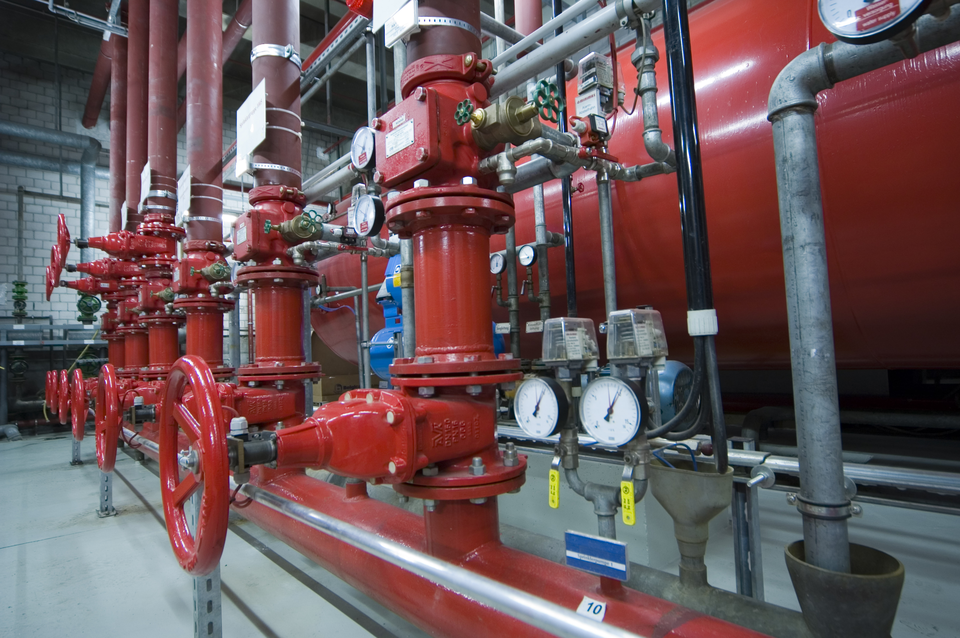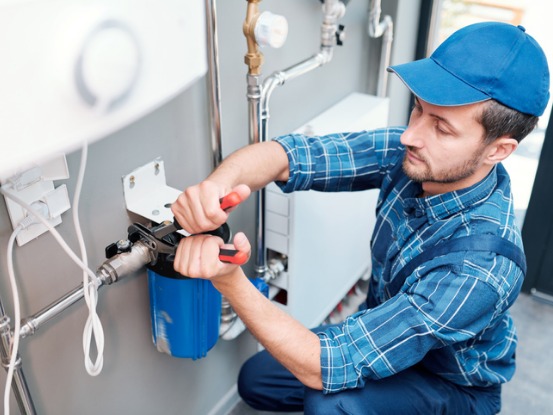Our Ultimate Instruction to Resolving Low Water Pressure in Your Home
Our Ultimate Instruction to Resolving Low Water Pressure in Your Home
Blog Article
We've uncovered this article pertaining to 9 Reasons for Low Water Pressure in Your House below on the internet and thought it made good sense to relate it with you on this page.

Low tide stress in your house can be a discouraging issue, impacting every little thing from bathing to washing meals. If you're experiencing weak water circulation, there are several possible causes and options to discover. In this overview, we'll discuss typical factors for low water stress and practical steps to resolve the problem effectively.
Introduction to Low Water Pressure
Low water pressure takes place when the flow of water from your faucets, showers, and various other fixtures is weak than normal. This can make daily jobs a lot more challenging and much less effective. Comprehending the root causes of low water stress is critical to finding the appropriate solution.
Typical Root Causes Of Low Water Pressure
Pipeline Obstructions
With time, pipes can come to be obstructed with natural resource, debris, or particles, restricting the circulation of water. This is a typical concern in older homes with galvanized steel pipes.
Deterioration
Corrosion within pipelines can lead to leaks and minimized water pressure. Rust buildup can constrict water circulation, specifically in aging plumbing systems.
Faulty Pressure Regulatory Authorities
Pressure regulators are accountable for keeping consistent water stress in your home. If they malfunction, it can cause low water pressure or unequal circulation throughout your home.
Local Water System Issues
In some cases, the issue exists outside your home. Community water system problems, such as main line leaks or upkeep work, can briefly reduce water stress in your area.
How to Diagnose Low Tide Stress
Examining Taps and Components
Begin by examining the water pressure at various taps and components throughout your home. If the problem is isolated to specific areas, it may indicate local problems.
Examining Pipes
Check noticeable pipelines for indications of leakages, rust, or obstructions. Pay attention to any unusual sounds, such as banging or rattling pipes, which might show issues within the plumbing system.
Consulting with a Plumber
If you're incapable to identify the root cause of low tide pressure, take into consideration hiring a specialist plumber to conduct an extensive evaluation. They can identify underlying concerns and recommend proper solutions.
Do It Yourself Solutions to Fix Low Tide Pressure
Cleansing Aerators and Showerheads
Natural resources can accumulate in aerators and showerheads, decreasing water flow. Get rid of and clean up these parts regularly to improve water stress.
Flushing Water Heater
Debris accumulation in the hot water heater can restrict flow and reduce efficiency. Flushing the tank regularly aids eliminate debris and maintain optimum performance.
Checking Stress Regulator
Guarantee that the pressure regulatory authority is operating correctly. Readjusting or changing the regulatory authority can assist restore appropriate water stress throughout your home.
Clearing Clogs in Water Lines
For minor obstructions, try using a plumbing snake or chemical drainpipe cleaner to clear obstructions in pipes. Be cautious when using chemicals and comply with safety and security standards.
When to Call a Professional Plumber
If do it yourself efforts fall short to resolve the issue or if you believe considerable plumbing troubles, it's finest to look for support from a qualified plumber. They have the experience and tools to resolve complex concerns securely and properly.
Preventive Measures to Maintain Water Stress
Normal Upkeep
Schedule routine maintenance for your plumbing system to stop concerns such as rust, leakages, and clogs. Attending to small issues early can help avoid even more significant repair work in the future.
Mounting a Stress Booster
Take into consideration mounting a stress booster pump to boost water pressure in areas with continually low flow. This can be particularly helpful for multi-story homes or buildings with high-demand fixtures.
Monitoring Water Usage
Bear in mind water usage routines and avoid ill-using the plumbing system. Simple changes, such as incredible showers and laundry loads, can aid maintain adequate water pressure.
Final thought
Handling low water pressure can be frustrating, however recognizing the underlying causes and implementing proper options can recover optimal flow throughout your home. Whether it's cleansing aerators, examining pipes, or talking to a plumber, taking proactive actions can make sure a steady supply of water for your daily requirements.
FOUR WAYS TO FIX LOW WATER PRESSURE NOW
Turning on a shower or faucet only to find the water comes out in a sad, slow drizzle is never a good feeling. How exactly are you supposed to wash a pan or take a quick shower when it takes 10 minutes just to rinse off a little soap? The good news is that when your water pressure is bad, there's always a cause: typically one that can be easily fixed. Here are some of the most common causes of low pressure and what you can do to fix the issue:
DEBRIS AND MINERAL DEPOSIT BUILDUPS
If you notice low water pressure from just one or two of the fixtures in your house, the problem likely has to do with debris buildup. Water is full of minerals and other debris, all of which can accumulate in your pipes and on your fixtures. This can cause a blockage that affects how much water flows through. To fix this, try filling a small plastic bag with white vinegar, and use a rubber band to hang it around your showerhead or faucet. Let the head of the fixture soak for a few hours, and the vinegar should loosen the deposits.
WATER LEAKS
Leaks are another common cause of low water pressure. If water is flowing out of your plumbing through a hole or crack before it can reach your fixture, the pressure coming out of the faucet or showerhead will be lower. A plumbing professional is your best bet for finding and repairing a leak in your water supply pipes.
Leaks are another common cause of low water pressure. If water is flowing out of your plumbing through a hole or crack before it can reach your fixture, the pressure coming out of the faucet or showerhead will be lower. A plumbing professional is your best bet for finding and repairing a leak in your water supply pipes.
FOUR WAYS TO FIX LOW WATER PRESSURE NOW
Turning on a shower or faucet only to find the water comes out in a sad, slow drizzle is never a good feeling. How exactly are you supposed to wash a pan or take a quick shower when it takes 10 minutes just to rinse off a little soap? The good news is that when your water pressure is bad, there's always a cause: typically one that can be easily fixed. Here are some of the most common causes of low pressure and what you can do to fix the issue:
DEBRIS AND MINERAL DEPOSIT BUILDUPS
If you notice low water pressure from just one or two of the fixtures in your house, the problem likely has to do with debris buildup. Water is full of minerals and other debris, all of which can accumulate in your pipes and on your fixtures. This can cause a blockage that affects how much water flows through. To fix this, try filling a small plastic bag with white vinegar, and use a rubber band to hang it around your showerhead or faucet. Let the head of the fixture soak for a few hours, and the vinegar should loosen the deposits.
WATER LEAKS
Leaks are another common cause of low water pressure. If water is flowing out of your plumbing through a hole or crack before it can reach your fixture, the pressure coming out of the faucet or showerhead will be lower. A plumbing professional is your best bet for finding and repairing a leak in your water supply pipes.
Leaks are another common cause of low water pressure. If water is flowing out of your plumbing through a hole or crack before it can reach your fixture, the pressure coming out of the faucet or showerhead will be lower. A plumbing professional is your best bet for finding and repairing a leak in your water supply pipes.
A VALVE ISSUE
If you have low water pressure throughout your home, check your main shut-off valve to make sure it's completely open. You may also want to see if there's a pressure-reducing valve installed. If there is, have a plumber help you adjust the settings to get the pressure you're looking for.
OTHERS USING WATER
Believe it or not, your low water pressure could be caused by your neighbors. If you notice low pressure at certain times of day, it may be because you and the people living next to you have similar schedules - when everyone is showering at the same time, the pressure will be lower in every home. Low pressure throughout the neighborhood may also be caused by an issue with your municipal water supply. If that's the case, call the supplier to see if they're working on the issue.
https://www.rotorooter.com/blog/water-leaking/low-water-pressure-fixes/

We had been shown that editorial about 4 Ways to Troubleshoot Low Water Pressure from someone on another web property. Do you know somebody who is very much interested in the subject? Be sure promote it. I praise you for your time. Come back soon.
Call Today Report this page